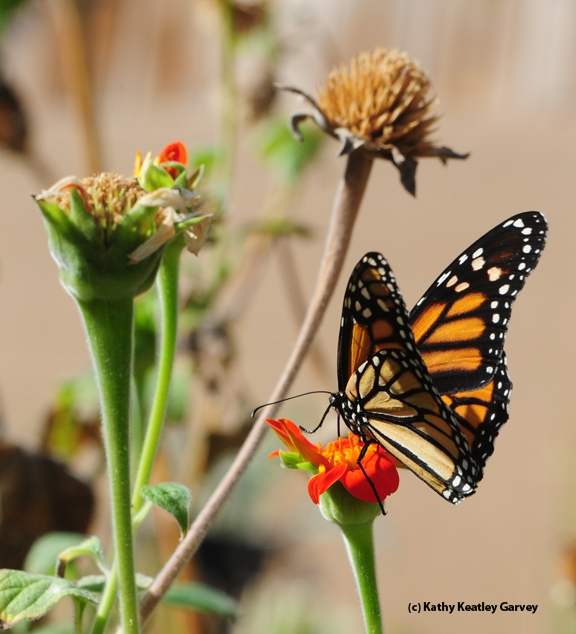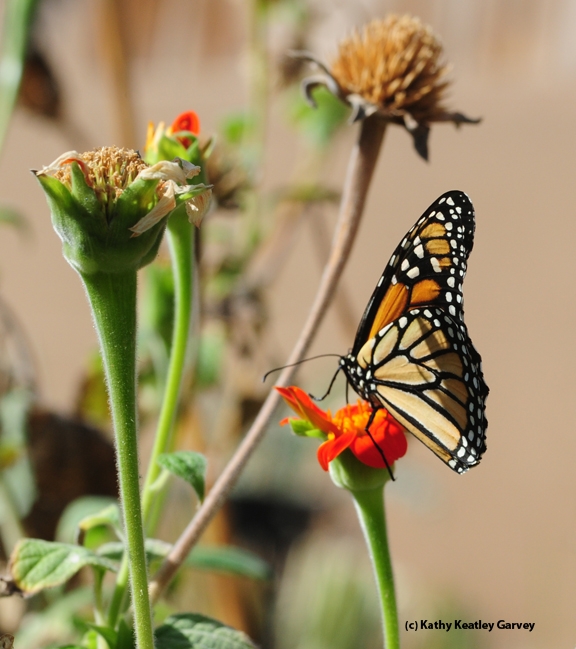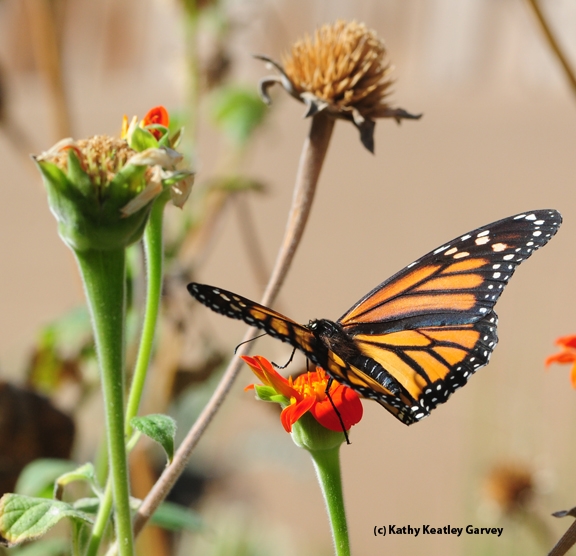Last Dec. 27 at the Natural Bridges State Park, we saw dozens of monarchs about 80 feet up in the eucalyptus trees. When the sun broke through the trees, assorted birds targeted them, scattering them like mosaic paper kites, much to the awe and aahs of the crowd below.
"Monarch butterflies are among the largest members of the family Nymphalidae in North America. Their caterpillars store toxic chemicals called cardiac glycosides in their bodies from the milkweed they eat. Cardiac glycosides make vertebrates like us quite sick, so don't eat a monarch butterfly or caterpillar if you can help it. The chemicals remain in the adult butterfly bodies as well but tend to be concentrated more in the wings than in the body. Interestingly, cardiac glycosides seem to have very little effect on insect predators and parasites."
"The annual North American migration begins as early as August. Populations west of the Rockies migrate to the Pacific Coast with overwintering roosts along the central California coast. One of the best known of these is in Pacific Grove, California. Populations east of the Rockies migrate to central Mexico. Adult monarchs typically only live a couple of months, although they can live up to 5 or 6 months so the individuals that emerge in early summer do not migrate. Each generation takes between 5 and 6 weeks from egg to adult. The last generation of the summer goes into migratory mode. They stop reproducing and fly in a linear fashion to one of the overwintering sites. These individuals generally do not begin reproducing until the following spring in February or March when they leave these sites and move north from the Mexican site or north and east from the Pacific Coast."
Welcome back, monarchs! You're now fueling up for mass migration.
Attached Images:

A monarch lands on a Mexican sunflower (Tithonia) in Vacaville, Calif. It may head to an overwintering site in Santa Cruz. (Photo by Kathy Keatley Garvey)

The monarch adjusts its position. (Photo by Kathy Keatley Garvey)

The monarch continues to feed. (Photo by Kathy Keatley Garvey)

The majestic monarch in all its glory. (Photo by Kathy Keatley Garvey)